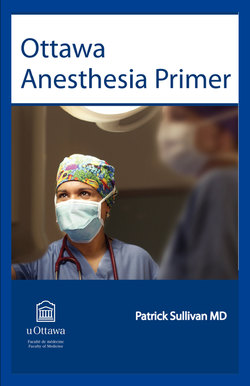Читать книгу Ottawa Anesthesia Primer - Patrick Sullivan - Страница 91
На сайте Литреса книга снята с продажи.
V. Confirmation of correct ETT placement:
ОглавлениеImmediate absolute proof that the ETT is in the tracheal lumen can be obtained by observing the ETT pass through the vocal cords, by observing ETCO2 returning with each respiration, or by visualizing the tracheal lumen through the ETT using a fiberoptic scope. Indirect confirmation that the trachea is intubated with a tracheal tube includes: listening over the epigastrium for the absence of breath sounds with ventilation, observing the chest rise and fall with positive pressure ventilation, observing condensation on the ETT, balloting the endotracheal cuff in the neck, and listening to the apex of each lung field for breath sounds with ventilation. There are reports of physicians auscultating “distant breath sounds” in each lung field when in fact the ETT was incorrectly placed in the esophagus. Hence, listening to the lung fields may reveal bronchospasm or evidence of an endobronchial intubation, but it cannot be relied on as absolute proof that the ETT is correctly positioned in the trachea.
If the ETT is positioned in the tracheal lumen and the patient is breathing spontaneously, the reservoir bag will fill and empty with respiration. An awake patient will not be able to vocalize with an ETT positioned in the tracheal lumen. On an anterior-posterior chest x-ray, the tip of the ETT should be located between the midpoint of the thoracic inlet and the carina.
Decreased air entry to one lung field may indicate that the ETT is in a mainstem bronchus (usually the right mainstem bronchus). In this situation, the patient may become increasingly hypoxic or continue to cough. An endobronchial intubation may be suspected when one side of the chest is observed moving more than the other with ventilation. In this situation, the airway pressures may be higher than normal (> 25 cm H2O), and an abnormally distant ETT position at the patient’s lips will be noted.
Clinical Pearl: “If in doubt, take it out”
This is prudent advice for anyone who has just attempted tracheal intubation and is unsure and unable to confirm tracheal placement. In this case, rather than risk hypoxic injury and gastric aspiration, it is better to remove the ETT, resume mask ventilation with 100% oxygen, stabilize the patient, and call for help.
Clinical Pearl: “If in doubt, leave it in”
This advice applies to the clinician who is considering tracheal extubation in a patient whose trachea has been intubated for a prolonged period of time. When the clinician questions whether the patient’s trachea can be safely extubated (see Chapter 7: extubation criteria), it is generally safer to delay extubation, continue to support ventilation, and ensure hemodynamic stability, analgesia, sedation, and oxygenation rather than perform premature tracheal extubation.
